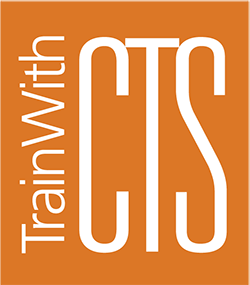EDG113 - Introduction to Microsoft Excel 2019/Office 365
Course Description
If you work with numbers, names, dates, or other important data, you need to create spreadsheets to manage this information. Microsoft Excel is the most widely-used spreadsheet software to organize, store, and optimize data. If you're ready to learn Excel 2019, this course will teach you the basics.
You will learn how to create a spreadsheet using several time-saving functions. You will also learn how to use macros and buttons, how to sort and analyze your data, and more. By course completion, you will know how to best organize large sets of data into a spreadsheet with this powerful business productivity tool.
Course Outline
Excel Basics
In our first lesson, you'll develop a solid understanding of the Excel interface. You'll become fluent in the secret language spoken only by Excel users, you'll discover the best way to correct just about any mistake you might make in Excel, and you'll find yourself gliding effortlessly from cell to cell, leaving behind expertly written labels, numbers, and formulas.
Creating a Worksheet
In this lesson, you'll learn five simple steps you should always follow to ensure that your worksheets are always well-planned, well-constructed, and beautifully formatted.
Time-Savers
Our third lesson will teach you the tricks of the Excel masters: a wide variety of useful shortcuts guaranteed to save you time, energy, and frustration. We'll also spend some time working with the Quick Analysis and Flash Fill tools. By the time you finish this lesson, you'll really start to feel like an Excel pro.
Relative, Absolute, Mixed, and Circular References
Do you know the difference between a relative reference, an absolute reference, a mixed reference, and a circular reference? You will after this lesson. Today, we focus on writing sophisticated formulas that can help ease us through some rather sticky scenarios.
3-Dimensional Workbooks
With enough practice, most Excel users quickly become adept at organizing their worksheets across two dimensions: rows and columns. But only a select few will learn how to take their worksheets into the third dimension. Today, you'll join that exclusive group. Prepare to have your socks knocked off as you gain hands-on experience in the construction of three-dimensional workbooks.
Sorting, Subtotaling, and Filtering
No Excel course would be complete without a discussion of Excel's amazing data-crunching capabilities. Today, you'll not only learn how to build a table in Excel, but you'll also learn how to subtotal, sort, and filter.
Charting Basics
In this lesson, we'll explore the exciting world of charts. You'll build your first graph today, and you'll learn how easy it is to adjust the chart type, labels, titles, colors, and many other aspects of your chart.
Advanced Charting Techniques
Today, you'll dig deep into Excel's charting capabilities. You'll explore everything from bar charts and line charts to more prosaic graphs like the pie chart and 3-D charts. You'll find out how to personalize your charts with photographs, text labels, and drawings. You'll also discover the best ways to format your chart for print or otherwise display the truly impressive charts that you'll be creating.
Intro to Excel's Statistical Functions
Excel includes many powerful functions that can automatically perform some very complicated tasks for you. In today's lesson, you'll learn some very interesting ways to put these functions to work for you. You'll find out how to ask Excel to magically derive averages, modes, maximums, minimums, and other useful statistics from nothing more than a column or two of numbers.
Financial Functions
We'll continue our exploration of Excel functions with an in-depth look at Excel's handy financial functions today. By the time this lesson is over, you'll be able to figure out how much money you'll have when you retire, when your kids reach college, or just before your next vacation. You'll be able to calculate the monthly payment on just about any type of loan, and you'll know how to figure out how long it will take to pay off your credit cards. You'll even create an amortization table of your very own, just like the one lenders use to track a loan's payoff amount over time.
Worksheet Automation
Students often rank this lesson as one of their favorites. Today, you'll find out how to automate just about any task you find tedious or time-consuming. You'll discover how to move your most frequently used commands from their present, obscure locations to a much more convenient place: the toolbar that's always perched at the very top of your screen. You'll also learn how you can use macros to reduce just about any complex task to a single keystroke.
Mastering Excel's IF Function
I think you'll be intrigued by our final lesson, in which you'll learn how to use Excel to aid you in decision making. We'll use a special function in Excel that allows it to make comparisons and use those comparisons as the basis for important decisions.

